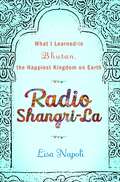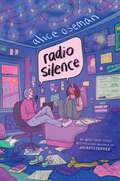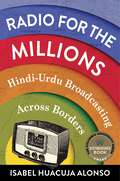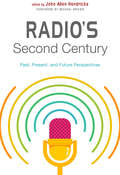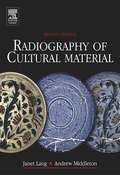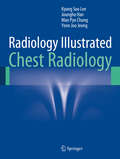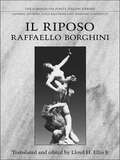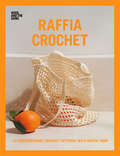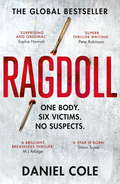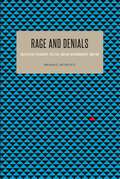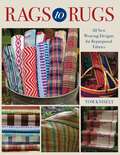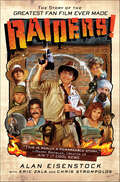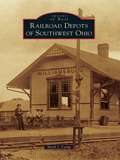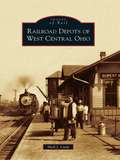- Table View
- List View
Radio Shangri-La: What I Discovered on my Accidental Journey to the Happiest Kingdom on Earth
by Lisa NapoliLisa Napoli was in the grip of a crisis, dissatisfied with her life and her work as a radio journalist. When a chance encounter with a handsome stranger presented her with an opportunity to move halfway around the world, Lisa left behind cosmopolitan Los Angeles for a new adventure in the ancient Himalayan kingdom of Bhutan--said to be one of the happiest places on earth. Long isolated from industrialization and just beginning to open its doors to the modern world, Bhutan is a deeply spiritual place, devoted to environmental conservation and committed to the happiness of its people--in fact, Bhutan measures its success in Gross National Happiness rather than in GNP. In a country without a single traffic light, its citizens are believed to be among the most content in the world. To Lisa, it seemed to be a place that offered the opposite of her fast-paced life in the United States, where the noisy din of sound-bite news and cell phones dominate our days, and meaningful conversation is a rare commodity; where everyone is plugged in digitally, yet rarely connects with the people around them. Thousands of miles away from everything and everyone she knows, Lisa creates a new community for herself. As she helps to start Bhutan's first youth-oriented radio station, Kuzoo FM, she must come to terms with her conflicting feelings about the impact of the medium on a country that had been shielded from its effects. Immersing herself in Bhutan's rapidly changing culture, Lisa realizes that her own perspective on life is changing as well--and that she is discovering the sense of purpose and joy that she has been yearning for. In this smart, heartfelt, and beautifully written book, sure to please fans of transporting travel narratives and personal memoirs alike, Lisa Napoli discovers that the world is a beautiful and complicated place--and comes to appreciate her life for the adventure it is.From the Hardcover edition.
Radio Silence
by Alice OsemanThe second novel by the phenomenally talented Alice Oseman, the author of the million-copy bestselling Heartstopper books—now a major Netflix series.What if everything you set yourself up to be was wrong?Frances has always been a study machine with one goal: elite university. Nothing will stand in her way. Not friends, not a guilty secret—not even the person she is on the inside.But when Frances meets Aled, the shy genius behind her favorite podcast, she discovers a new freedom. He unlocks the door to Real Frances and for the first time she experiences true friendship, unafraid to be herself. Then the podcast goes viral and the fragile trust between them is broken.Caught between who she was and who she longs to be, Frances’s dreams come crashing down. Suffocating with guilt, she knows that she has to confront her past…She has to confess why Carys disappeared…Meanwhile at university, Aled is alone, fighting even darker secrets.It’s only by facing up to your fears that you can overcome them. And it’s only by being your true self that you can find happiness.Frances is going to need every bit of courage she has.A coming-of-age read that tackles issues of identity, the pressure to succeed, diversity, and freedom to choose, Radio Silence is a tour de force by the most exciting writer of her generation.
Radio and the Gendered Soundscape
by Christine EhrickThis book is a history of women, radio, and the gendered constructions of voice and sound in Buenos Aires, Argentina, and Montevideo, Uruguay. Through the stories of five women and one radio station, this study makes a substantial theoretical contribution to the study of gender, mass media, and political culture and expands our knowledge of these issues beyond the US and Western Europe. Included here is a study of the first all-women's radio station in the Western Hemisphere, an Argentine comedian known as 'Chaplin in Skirts', an author of titillating dramatic serials and, of course, Argentine First Lady 'Evita' Perón. Through the concept of the gendered soundscape, this study integrates sound studies and gender history in new ways, asking readers to consider both the female voice in history and the sonic dimensions of gender.
Radio and the Jews
by David S. Siegel Susan Siegel[From the back cover] The Untold Story of How Radio Influenced America's Image of Jews From stereotypes to role models, the first comprehensive look at how Jews were portrayed on radio from the 1920s to the 1950s. Examines over 100 programs and characters, including comedy, drama, soap opera, religious, documentary and World War II. CD features sample excerpts from programs that stirred listeners' emotions 60 years ago. The Siegels' new book salvages many comedy, drama, and religious programs from obscurity, sheds new light on familiar Jewish-themed programs, and addresses anti-Semitic radio. A highly useful and often entertaining glimpse into Jewish radio, Radio and the Jews is a unique reference for scholars of 20th century radio, media and religion. Tona Hangen, Author of Redeeming the Dial: Radio, Religion, and Popular Culture in America David Siegel has been collecting Golden Age of Radio broadcasts, books and ephemera for over 40 years. He is the editor of The Witch's Tale, an anthology of scripts from a 1930s horror program and co-author of Flashgun Casey, Crime Photographer. Susan Siegel has been involved with radio for 20 years. She has co-authored two reference books about radio with her husband: A Resource Guide to the Golden Age and Radio Scripts in Print.
Radio and the Politics of Sound in Interwar France, 1921–1939
by Rebecca P. ScalesIn December 1921, France broadcast its first public radio program from a transmitter on the Eiffel Tower. In the decade that followed, radio evolved into a mass media capable of reaching millions. Crowds flocked to loudspeakers on city streets to listen to propaganda, children clustered around classroom radios, and families tuned in from their living rooms. Radio and the Politics of Sound in Interwar France, 1921–1939 examines the impact of this auditory culture on French society and politics, revealing how broadcasting became a new platform for political engagement, transforming the act of listening into an important, if highly contested, practice of citizenship. Rejecting models of broadcasting as the weapon of totalitarian regimes or a tool for forging democracy from above, the book offers a more nuanced picture of the politics of radio by uncovering competing interpretations of listening and diverse uses of broadcast sound that flourished between the world wars.
Radio for the Millions: Hindi-Urdu Broadcasting Across Borders
by Isabel Huacuja AlonsoFrom news about World War II to the broadcasting of music from popular movies, radio played a crucial role in an increasingly divided South Asia for more than half a century. Radio for the Millions examines the history of Hindi-Urdu radio during the height of its popularity from the 1930s to the 1980s, showing how it created transnational communities of listeners.Isabel Huacuja Alonso argues that despite British, Indian, and Pakistani politicians’ efforts to usurp the medium for state purposes, radio largely escaped their grasp. She demonstrates that the medium enabled listeners and broadcasters to resist the cultural, linguistic, and political agendas of the British colonial administration and the subsequent independent Indian and Pakistani governments. Rather than being merely a tool of nation building in South Asia, radio created affective links that defied state agendas, policies, and borders. It forged an enduring transnational soundscape, even after the 1947 Partition had made a united India a political impossibility.Huacuja Alonso traces how people engaged with radio across news, music, and drama broadcasts, arguing for a more expansive definition of what it means to listen. She develops the concept of “radio resonance” to understand how radio relied on circuits of oral communication such as rumor and gossip and to account for the affective bonds this “talk” created. By analyzing Hindi film-song radio programs, she demonstrates how radio spurred new ways of listening to cinema. Drawing on a rich collection of sources, including newly recovered recordings, listeners’ letters to radio stations, original interviews with broadcasters, and archival documents from across three continents, Radio for the Millions rethinks assumptions about how the medium connects with audiences.
Radio und Schizophrenie: Zur Radiotheorie der Schizoanalyse
by Ferdinand KlüsenerIn diesem Buch wird eine umfassende Radiotheorie der Schizoanalyse formuliert, die auf wenig erforschten Texten, Praktiken und Archivmaterial basiert. Im Mittelpunkt steht die Relevanz der Schizoanalyse für den ästhetischen Diskurs des 20. Jahrhunderts, insbesondere im Kontext der Radiokunst. Der Autor untersucht die Positionierung dieser Theorie zwischen Theater- und Medienwissenschaften und analysiert deren Beziehung zur Geschichte und Ästhetik des Radios. Durch die Verbindung des mikropolitischen Gestenbegriffs von Deleuze und Guattari mit Konzepten des Gestischen aus dem Lehrstück und deren Verortung in einer Phänomenologie der Zeit jenseits des Tragischen wird ein neuer theoretischer Rahmen geschaffen. Zudem werden bisher unbekannte auditive Objekte für die Historisierung und Kanonisierung der Radiotheorie entdeckt. Methodisch stützt sich die Arbeit auf Performanceanalyse, Medienarchäologie und Interviews mit Akteuren des Feldes. Das Buch leistet einen entscheidenden Beitrag zur Erforschung eines weitgehend unerforschten, aber zentral historisch relevanten Themas und definiert neue theoretische Konzepte für Theorie und Praxis.
Radio's New Wave: Global Sound in the Digital Era
by Jason Loviglio and Michele HilmesRadio’s New Wave explores the evolution of audio media and sound scholarship in the digital age. Extending and updating the focus of their widely acclaimed 2001 book The Radio Reader, Hilmes and Loviglio gather together innovative work by both established and rising scholars to explore the ways that radio has transformed in the digital environment. Contributors explore what sound looks like on screens, how digital listening moves us, new forms of sonic expression, radio’s convergence with mobile media, and the creative activities of old and new audiences. Even radio’s history has been altered by research made possible by digital and global convergence. Together, these twelve concise chapters chart the dissolution of radio’s boundaries and its expansion to include a wide-ranging universe of sound, visuals, tactile interfaces, and cultural roles, as radio rides the digital wave into its second century.
Radio's Second Century: Past, Present, and Future Perspectives
by Bruce Mims John Allen Hendricks Daniel Riffe Brad Clark Mark Ward Lu Wu Laith Zuraikat Joseph R. Blaney David Crider Rachel Sussman-Wander Kaplan John F. Barber Emily W. Easton John Mark Dempsey Anjuli Joshi Brekke Anne F. MacLennan Archie McLean Michael Nevradakis Simon OrderOne of the first books to examine the status of broadcasting on its one hundredth anniversary, Radio’s Second Century investigates both vanguard and perennial topics relevant to radio’s past, present, and future. As the radio industry enters its second century of existence, it continues to be a dominant mass medium with almost total listenership saturation despite rapid technological advancements that provide alternatives for consumers. Lasting influences such as on-air personalities, audience behavior, fan relationships, and localism are analyzed as well as contemporary issues including social and digital media. Other essays examine the regulatory concerns that continue to exist for public radio, commercial radio, and community radio, and discuss the hindrances and challenges posed by government regulation with an emphasis on both American and international perspectives. Radio’s impact on cultural hegemony through creative programming content in the areas of religion, ethnic inclusivity, and gender parity is also explored. Taken together, this volume compromises a meaningful insight into the broadcast industry’s continuing power to inform and entertain listeners around the world via its oldest mass medium--radio.
Radioactive: Marie & Pierre Curie: A Tale of Love and Fallout
by Lauren RednissA visual journey into the life of Marie Curie, as told through the dazzling collage style of acclaimed author and artist Lauren Redniss “Lauren Redniss creates an entirely new genre of biography.” —Nylon“Visually dazzling…a startlingly original graphic style.” —SlateThe name Marie Curie is enshrined in every schoolchild’s mind as one of the earliest and most inspirational female pioneers in the history of science. Yet the rich, vivid, and romantic story of Marya Salome Sklodwska—the young Polish national who discovered radioactivity—has been lost to time . . . until now, in the pages of this stunning, wildly creative, and uniquely moving visual biography by one of the most creative artistic talents working today. Lauren Redniss, a celebrated New York Times illustrator and storyteller, has thrown herself deeply and passionately into researching the story of the real Marie Curie; of her passionate and tragic romantic life; and of the century of scientific innovation and controversy that sprang from her discovery of radium and went on to change the course of world history. Drawing on her original archival research in Europe and the United States—and a host of new interviews with Curie family members and scientists who carry on the Curie tradition—Redniss has created a fascinating and deeply moving book. A visually stunning work of illustrative art, Radioactive walks the reader through the story of Curie’s own life, which was marked by both extraordinary scientific discovery and dramatic personal trauma—from her romantic partnership with Pierre, through his tragic decline from radium poisoning and death in a traffic accident, to the scandalous affair with another fellow scientist that almost cost her her second Nobel Prize. But it also casts an eye forward, to survey the changes wrought by Curie’s discovery of radioactivity—illuminating the path from the Curie laboratory past the bright red mushroom clouds in the Nevada desert through Three Mile Island and the advance in radiation therapy and nuclear power today. Whether young or old, scientific novice or expert, no one will fail to be moved by Lauren Redniss’s eerie and wondrous evocation of one of history’s most intriguing figures.
Radiography of Cultural Material
by Julia Tum Andrew MiddletonRadiography can be an invaluable tool for the study of a diverse array of cultural materials including metals, ceramics, paper, paintings and human and animal remains. In this book, experts in the field bring to life their experiences with the different materials, describing the techniques that can be employed to discover the stories behind the objects. This second edition, available in paperback for the first time, includes new case studies and images, as well as whole new sections on digital imaging, quality control and animal mummies.
Radiology Illustrated: Chest Radiology
by Kyung Soo Lee Joungho Han Man Pyo Chung Yeon Joo JeongThe purpose of this atlas is to illustrate how to achieve reliable diagnoses when confronted by the different abnormalities, or "disease patterns", that may be visualized on CT scans of the chest. The task of pattern recognition has been greatly facilitated by the advent of multidetector CT (MDCT), and the focus of the book is very much on the role of state-of-the-art MDCT. A wide range of disease patterns and distributions are covered, with emphasis on the typical imaging characteristics of the various focal and diffuse lung diseases. In addition, clinical information relevant to differential diagnosis is provided and the underlying gross and microscopic pathology is depicted, permitting CT-pathology correlation. The entire information relevant to each disease pattern is also tabulated for ease of reference. This book will be an invaluable handy tool that will enable the reader to quickly and easily reach a diagnosis appropriate to the pattern of lung abnormality identified on CT scans.
Radiomics and Radiogenomics in Neuro-oncology: First International Workshop, RNO-AI 2019, Held in Conjunction with MICCAI 2019, Shenzhen, China, October 13, Proceedings (Lecture Notes in Computer Science #11991)
by Hassan Mohy-ud-Din Saima RathoreThis book constitutes the proceedings of the First International Workshop on Radiomics and Radiogenomics in Neuro-oncology, RNO-AI 2019, which was held in conjunction with MICCAI in Shenzhen, China, in October 2019. The 10 full papers presented in this volume were carefully reviewed and selected from 15 submissions. They deal with the development of tools that can automate the analysis and synthesis of neuro-oncologic imaging.
Raffaello Borghini's Il Riposo
by Lloyd H. EllisRaffaello Borghini's Il Riposo (1584) is the most widely known Florentine document on the subject of the Counter-Reformation content of religious paintings. Despite its reputation as an art-historical text, this is the first English-language translation of Il Riposo to be published. A distillation of the art gossip that was a feature of the Medici Grand Ducal court, Borghini's treatise puts forth simple criteria for judging the quality of a work of art. Published sixteen years after the second edition of Giorgio Vasari's Vite, the text that set the standard for art-historical writing during the period, Il Riposo focuses on important issues that Vasari avoided, ignored, or was oblivious to. Picking up where Vasari left off, Borghini deals with artists who came after Michaelangelo and provides more comprehensive descriptions of artists who Vasari only touched upon such as Tintoretto, Veronese, Barocci, and the artists of Francesco I's Studiolo. This text is also invaluable as a description of the mid-sixteenth century reaction against the style of the 'maniera,' which stressed the representation of self-consciously convoluted figures in complicated works of art.The first art treatise specifically directed toward non-practitioners, Il Riposo gives unique insight into the early stages of art history as a discipline, late Renaissance art and theory, and the Counter-Reformation in Italy.
Raffia Crochet: 10 Contemporary Crochet Patterns with Raffia Yarn
by Wool and the GangThe DIY fashion brand presents ten fun and easy crochet projects featuring Ra-Ra Raffia—the endlessly versatile plant-based yarn. Raffia yarn is made of one-hundred percent long wood fiber, making it not only vegan and biodegradable, but also water-repellent and quick-drying. This light and eco-friendly yarn adds structure to your projects, making it perfect for crocheting hats, bags and other accessories. Here you&’ll find ten crochet projects that show off the ease, versatility and style of Wool and the Gang's line of Ra-Ra Raffia yarns. Ranging from beginner to intermediate skill levels, the projects include bags, hats and baskets, which are then further embellished with raffia yarn embroidery. General techniques are covered at the end of the book, with step-by-step instructions accompanied by clear illustrations.
Rag Darlings: Dolls From the Feedsack Era
by Gloria NixonDiscover the history behind more than 250 dolls, with photos, fabric panels, and ephemera that bring America&’s past to life. Since the day a simple rag doll was carried off the Mayflower, dolls have captured our hearts, and thrifty Americans have always made dolls for their children. As the centuries progressed, early homemade dolls with painted faces gave way to commercial cut-and-sew versions. Then advertisers jumped in with dolls printed on flour sacks and fabric panels—which became precious possessions of little girls during the dark days of the Great Depression and World War II. In this book, you&’ll find history and photographs of more than 250 dolls, fabric panels, and doll ephemera, many rarely seen items, careful collected and documented by historian Gloria Nixon.
Ragdoll: Now a major TV series (A Ragdoll Book #1)
by Daniel ColeOne body. Six victims.'The race is on in this highly anticipated debut.' Metro'A brilliant, breathless thriller. If you liked Se7en, you'll love this!' M.J. Arlidge'A high concept solution to a mystery' Sophie Hannah'An exciting thriller' Linwood Barclay A body is discovered with the dismembered parts of six victims stitched together, nicknamed by the press as the 'Ragdoll'. Assigned to the shocking case are Detective William 'Wolf' Fawkes, recently reinstated to the London Met, and his former partner Detective Emily Baxter.The 'Ragdoll Killer' taunts the police by releasing a list of names to the media, and the dates on which he intends to murder them. With six people to save, can Fawkes and Baxter catch a killer when the world is watching their every move?Translated into over 30 languages, RAGDOLL is a quality, rocket-paced thriller with twists and turns you won't see coming. For readers of Jo Nesbo. You will not stop talking about this book.What everyone is saying about RAGDOLL:'A star is born. Killer plot. Killer pace. Twisted killer and a killer twist. Kill to get a copy.' Simon Toyne'...the best debut I've ever read.' Rachel Abbott'This book kept me captivated, my heart pumping and guessing to the very end!' NetGalley reviewerRead by Andrew Wincott(p) 2017 Orion Publishing Group
Ragdoll: Soon to be a major TV series (A Ragdoll Book #1)
by Daniel Cole'A twisted killer and a killer twist. Kill to get a copy' Simon Toyne, bestselling author of The Boy Who Saw A body is discovered with six victims stitched together, nicknamed by the press as the 'Ragdoll'. Assigned to the shocking case are Detective William 'Wolf' Fawkes, recently reinstated to the London Met, and his former partner Detective Emily Baxter.The 'Ragdoll Killer' taunts the police by releasing a list of names to the media, and the dates on which he intends to murder them. With six people to save, can Fawkes and Baxter catch a killer when the world is watching their every move?'A brilliant, breathless thriller' M.J. Arlidge, bestselling author of Down to the WoodsPerfect for fans of MJ Arlidge, JP Delaney, Steve Cavanagh, Chris Carter and Helen FieldsReaders LOVE Ragdoll . . . 'This book kept me captivated, my heart pumping and guessing to the very end!' '...a rollercoaster of a thriller.' '...one of the most well written crime thrillers I have ever read''A very well written debut novel which had all the twists and turns and intrigue that you need.' 'Totally unputdownable'
Rage and Denials: Collectivist Philosophy, Politics, and Art Historiography, 1890–1947
by Branko MitrovićIn Rage and Denials, philosopher and architectural historian Branko Mitrović examines in detail the historiography of art and architecture in the twentieth century, with a focus on the debate between the understanding of society as a set of individuals and the understanding of individuals as mere manifestations of the collectives to which they belong. The conflict between these two views constitutes a core methodological problem of the philosophy of history and was intensely debated by twentieth-century art historians—one of the few art-historical debates with a wide range of implications for the entire field of the humanities. Mitrović presents the most significant positions and arguments in this dispute as they were articulated in the art- and architectural-historical discourse as well as in the wider context of the historiography and philosophy of history of the era. He explores the philosophical content of scholarship engaged in these debates, examining the authors’ positions, the intricacies and implications of their arguments, and the rise and dominance of collectivist art historiography after the 1890s. He centers his study on the key art-historical figures Erwin Panofsky, Ernst Gombrich, and Hans Sedlmayr while drawing attention to the writings of the less well known Vasiliy Pavlovich Zubov. Rage and Denials offers a valuable window onto how key aspects of modern research in the humanities took shape over the course of the twentieth century.
Rags to Rugs: 30 New Weaving Designs for Repurposed Fabrics
by Tom KniselyTom Knisely is back with 30 brand-new designs for his favorite type of weaving project: rag rugs! Rag rugs are made from otherwise &“scrap&” fabric or repurposed linens or clothing. When planned and woven carefully, your cast-off fabric will become a gorgeous, hard-wearing floor mat! In Rags to Rugs, Tom explores the weaving possibilities of a variety of fabrics, from T-shirts and jeans to quilts, linens, towels, and more. He shows you the techniques he uses to get the most from each piece and gives advice on how best to set up your loom for weaving with rags much thicker than your typical weaving thread.Ready to get started? First, look at Tom's 30 beautiful rugs and read through each project for the wealth of information he's included on the materials used and options you might try to create a similar rug. He shares exactly what he chose for each project, but the drafts are adaptable to what you have on hand or can source from friends, family, and thrift stores. Once you've gathered and prepared your materials, refer to the section on rug weaving basics for a refresher if needed and some very helpful tips, and you are on your way!
Raiders!: The Story of the Greatest Fan Film Ever Made
by Alan Eisenstock Eric Zala Chris StrompolosThe official companion book to the hit feature-length documentary, Raiders!: The Story of the Greatest Fan Film Ever Made, in theaters and on video on demand June 27th 2016In 1982, in Ocean Springs, Mississippi, Chris Strompolos, eleven, asked Eric Zala, twelve, a question: "Would you like to help me do a remake Raiders of the Lost Ark? I'm playing Indiana Jones."And they did it. Every shot, every line of dialogue, every stunt.They borrowed and collected costumes, convinced neighborhood kids to wear grass skirts and play natives, cast a fifteen-year-old as Indy's love interest, rounded up seven thousand snakes (sort of), built the Ark, the Idol, the huge boulder, found a desert in Mississippi, and melted the bad guys' faces off.It took seven years.Along the way, Chris had his first kiss (on camera), they nearly burned down the house and incinerated Eric, lived through parents getting divorced and remarried, and watched their friendship disintegrate.Alan Eisenstock's Raiders! is the incredible true story of Eric Zala and Chris Strompolos, how they realized their impossible dream of remaking Raiders of the Lost Ark, and how their friendship survived all challenges, from the building of a six-foot round fiberglass boulder to the devastation of Hurricane Katrina.
Rail Depots of Eastern North Carolina (Images of Rail)
by Larry K. Neal Jr.Railroads have been an integral part of North Carolina since the 1850s, allowing goods and people to travel across the state or to other areas of the country. For many years, the main focus of small towns and large cities in the state was the railroad depots. Residents could purchase train tickets, businesses sought to ship or receive goods for market, and kids loved to visit and wave to the passing train crews. During the Christmas season, presents ordered from catalogs would arrive by Railway Express and were delivered to homes across the area. Mail was also delivered by rail to the depots, even if the train did not stop at a particular community. This book hopes to provide rail enthusiasts, local and economic historians, and history lovers in general a look back at the heyday of railroads and how much they affected daily life in North Carolina.
Railroad Depots of Central Ohio
by Mark J. CampBy the mid-1850s, the railroad craze had hit central Ohio. Pioneer railroads that were to evolve into portions of the Baltimore and Ohio, New York Central, and Pennsylvania Railroads connected the state capital, Columbus, with the canals, Lake Erie, and the Ohio River. The region was crisscrossed by numerous other lines by 1880; Columbus became the main hub while other railroad centers included Circleville, Delaware, Mansfield, Mount Vernon, Newark, and Zanesville. Hundreds of depots were built throughout central Ohio to serve railroad passengers and to handle baggage, mail, and freight. Depots became the center of commerce and activity at communities--big and small. With the discontinuance of passenger trains across the Buckeye State, many depots disappeared from trackside--many simply demolished, others relocated for non-railroad uses. Railroad Depots of Central Ohio offers a pictorial history of selected depots, centering around Columbus and Franklin County, using old postcards and vintage photographs.
Railroad Depots of Northwest Ohio
by Mark J. CampChartered as early as 1832, Northwestern Ohio railroads were among the first in the Midwest. Toledo, a rapidly developing lake port at the mouth of the Maumee River, was the destination point for many lines; others were just passing through on their way to Chicago and points west. By 1907, 20 lines served the northwestern counties. All had a series of stations along their lines, often with depots or other railroad structures. Although many have come and gone, Northwest Ohio was once home to over 250 passenger or combination depots serving the traveling public. Railroad Depots of Northwest Ohio relives the golden age of railroad travel through vintage postcards and mid-20th century photos of selected depots and related structures.
Railroad Depots of West Central Ohio (Images of Rail)
by Mark J. CampTwelve railroad lines served west central Ohio around 1907 and were the lifeblood of the communities they ran through. Bellefontaine, Bradford, and Crestline became major terminals, and lesser known places like Dola, Ohio City, and Peoria also owe their existence to the iron horse. Around 300 depots served the west central region, with the earliest dating to the late 1840s. The depot was the center of activity in the smallest village to the largest city. Many of the depots no longer exist--victims of progress, nature, or neglect. Some survive as historical museums, various businesses, and residences; a few remain in railroad use. The proud history of railroading lives on in the restored depots at Bucyrus and Galion--two architectural gems of the Buckeye State. Railroad Depots of West Central Ohio shares a tale of the golden age of rail travel through vintage postcards and mid-20th-century photographs of selected depots and other railroad structures.
